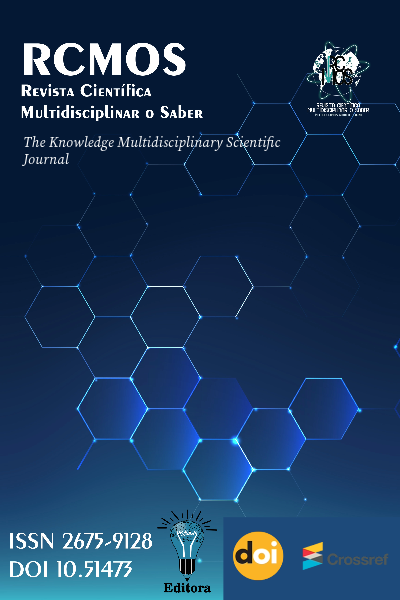Synergy of Measures and Control Strategies in the Huanglongbing (HLB) Citrus Disease
Integrated Approaches for Effective Prevention and Combat
DOI:
https://doi.org/10.51473/ed.al.v3i1.623Keywords:
Greening dos Citrus., HuanglongbingAbstract
Citrus Greening, also known as Huanglongbing (HLB), is one of the most devastating diseases affecting citrus cultivation worldwide. This disease is caused by a bacterium transmitted by psyllids, insects that feed on plant sap. Greening results in severe symptoms such as wilting and yellowing of the leaves, compromising the production and quality of the fruits, and in many cases, leading to the death of the trees. The losses have been significant in various parts of the world, especially in Florida, where crops have been decimated, resulting in substantial economic damages to the citrus sector. Given this threat, the adoption of appropriate control measures and strategies is essential for effective prevention and combat of the disease. The general objective of this work is to investigate and present a synergistic and integrated approach to measures and control strategies for Citrus Greening, aiming to prevent the spread of the disease, combat its propagation, and promote proper and sustainable management of citrus crops. The methodology used in this work consists of a comprehensive and systematic bibliographic review on the topic of Citrus Greening control.
Downloads
References
ALVES, M. N.; RAIOL-JUNIOR, L. L.; GIRARDI, E. A. et al. Insight into resistance to ‘Candidatus Liberibacter asiaticus,’associated with Huanglongbing, in Oceanian citrus genotypes. Front. Plant Sci., v. 13, 09 September 2022. Disponível em: https://doi.org/10.3389/fpls.2022.1009350. Acesso em: 10 jan. 2023.
BALDWIN, E., PLOTTO, A., MANTHEY, J., MCCOLLUM, G., BAI, J., & IREY, M. (2019). Efeito da infecção por Liberibacter (huanglongbing ou “citrus greening”) na qualidade do suco de laranja avaliada por avaliação sensorial. Journal of Food Science, v. 84, n. 3, p. 437-446. 2019
BOVÉ, J. M. Huanglongbing: a destructive, newly-emerging, century-old disease of citrus. Journal of Plant Pathology, v. 88, n. 1, p.7-37. 2006
DUTRA, A. Manejo integrado para erradicar o Greening. Revista Cultivar. 2018. Disponivel em: https://revistacultivar.com.br/noticias/manejo-integrado-para-erradicar-o-greening. Acesso em: 10 jan. 2023.
FUNDO DE DEFESA DA CITRICULTURA – FUNDECITRUS. 2022. Levantamento da incidência das doenças dos citros, Greening, CVC e Cancro Cítrico no cinturão citrícola de São Paulo e Triângulo/ Sudoeste Mineiro. Disponível em: https://www.fundecitrus. com.br/levantamentos. Acesso em: 02 jan. 2023
FUNDO DE DEFESA DA CITRICULTURA – FUNDECITRUS. 2021. Sinal vermelho aceso para o greening. Citricultor- Edição Especial. Ano XII, nº 56 I 2º Semestre 2021. Disponível em: https://www.fundecitrus.com.br/comunicacao/revista_detalhes/revista-citricultor---edicao-56/75. Acesso em: 05 jan. 2023.
FUNDO DE DEFESA DA CITRICULTURA – FUNDECITRUS. 2017. Armadilha adesiva detecta até 90 vezes mais psilídeos do que método visual em áreas com controle químico. Disponível em: https://www.fundecitrus.com.br/comunicacao/noticias/integra/armadilha-adesiva-detecta-ate-90-vezes-mais-psilideos-do-que-metodo-visual-em-areas-com-controle-quimico/554. Acesso em: 10 jan. 2023.
GIRARDI, E. A. et al. Relatório Corporativo da I Reunião Técnica do Arranjo HLB dos Citros:
“Soluções inovadoras e integradas para a superação da doença huanglongbing (HLB, ex-greening) dos citros” / Eduardo Augusto Girardi .... [et. al.]. – Cruz das Almas, BA: Embrapa Mandioca e Fruticultura, 2017. Disponível em: https://ainfo.cnptia.embrapa.br/digital/bitstream/item/167258/1/DOC-218-Girardi-AINFO-fi cha-ajustada.pdf. Acesso em: 02 jan. 2023.
GOTTWALD, T. R. Current epidemiological understanding of citrus huanglongbing. Annual Review of Phytopathology, v. 48, p. 119-139. 2010
GRAFTON-CARDWELL, E. E.; STELINSKI, L. L.; STANSLY, P. A. Biology and management of Asian citrus psyllid, vector of the huanglongbing pathogens. Annual Review of Entomology, v. 58, p. 413-432. 2013
HALL, D. G.; RICHARDSON, M. L.; AMMAR, E.; HALBERT, S. E. Asian citrus psyllid, Diaphorina citri, vector of citrus huanglongbing disease. Entomologia Experimentalis et Applicata, v. 146, n. 2, p. 207-223. 2013
KHAN, M; RAZI, F. D. Citrus Greening Disease (Huanglongbing) a Perilous Threat to Global Citrus Industry. J Hortic, v. 5, n. 3, p. 1000e110. 2018. doi: 10.4172/2376-0354.1000e110
LI, X.; RUAN, H.; ZHOU, C. et al. Controlling Citrus Huanglongbing: Green Sustainable Development Route Is the Future. Front Plant Sci. 2021; v. 12, p. 760481. doi: 10.3389/fpls.2021.760481.
LIBERATO, T. Óculos especiais identifi cam sintomas do greening em folhas de citros. Embrapa 2017. Disponível em: https://www.embrapa.br/busca-de-noticias/-/noticia/21787015/oculos-especiais-identifi cam-sintomas-do-greening-em-folhas-de-citros#:~:text=Os%20sintomas%20aparecem%20nas%20folhas,-
clara%20entre%20essas%20duas%20cores. Acesso em: 03 jan. 2023.
TOMASETO, A. F.; KRUGNER, R.; LOPES, J. R. S.; PARRA, J. R. P. The quest for resistance in citrus to huanglongbing. Annual Review of Entomology, v. 66, p. 221-238. 2021.
US DEPARTMENT OF AGRICULTURE (USDA). Citrus: World Markets and Trade. 2021 Disponível em: https://apps.fas.usda.gov/psdonline/circulars/citrus.pdf. Acesso em: 03 jan. 2023.
Baldwin, E., Plotto, A., Manthey, J., McCollum, G., Bai, J., & Irey, M. (2019). Eff ect of Liberibacter infection (huanglongbing or “citrus greening”) on orange juice fl avor quality by sensory evaluation. Journal of Food Science, 84(3), 437-446.
Bové, J. M. (2006). Huanglongbing: a destructive, newly-emerging, century-old disease of citrus. Journal of Plant Pathology, 88(1), 7-37.
Gottwald, T. R. (2010). Current epidemiological understanding of citrus huanglongbing. Annual Review of Phytopathology, 48, 119-139.
Grafton-Cardwell, E. E., Stelinski, L. L., & Stansly, P. A. (2013). Biology and management of Asian citrus psyllid, vector of the huanglongbing pathogens. Annual Review of Entomology, 58, 413-432.
Hall, D. G., Richardson, M. L., Ammar, E., & Halbert, S. E. (2013). Asian citrus psyllid, Diaphorina citri, vector of citrus huanglongbing disease. Entomologia Experimentalis et Applicata, 146(2), 207-223.
Tomaseto, A. F., Krugner, R., Lopes, J. R. S., & Parra, J. R. P. (2021). The quest for resistance in citrus to huanglongbing. Annual Review of Entomology, 66, 221-238.












